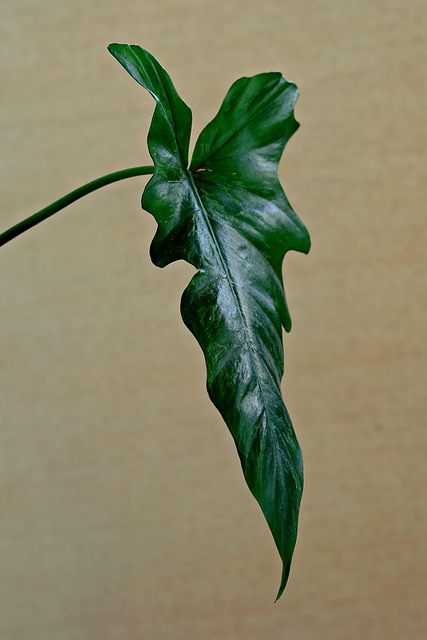A spring plant refresh involves revitalizing indoor and outdoor plants with repotting, new species, proper sunlight, soil, watering, and protection from frost. This seasonal ritual enhances air quality, connects you to nature, and creates a thriving home environment. Strategize transitions for tender plants, incorporate annuals and perennials, and adapt care routines as seasons change for optimal plant health during winter and preparation for spring.
In the ever-changing seasons, indoor and outdoor plants offer a constant source of beauty and life. As we embrace spring’s awakening, indoor plants thrive on renewed light and temperature shifts, requiring a seasonal transition strategy for optimal growth. This article guides you through a plant refresh, from optimizing indoor spaces in spring to adapting outdoor plantings for warmer days and preparing them for autumnal care. Discover tips to keep your plant collection thriving year-round with a simple, comprehensive approach to seasonal changes.
Spring's Awakening: Indoor Plants Thrive
As winter’s chill fades, spring brings a natural urge to refresh and rejuvenate—and that extends to our indoor spaces. The arrival of warmer temperatures and longer days signals a perfect time for a spring plant refresh. Indoor plants, often overlooked during the colder months, can now flourish with renewed energy. This season, consider repotting your greens or introducing new varieties to create a vibrant atmosphere.
The gentle stirrings of spring spark a sense of renewal, encouraging us to nurture our indoor ecosystems. With careful consideration, you can choose plants that adapt beautifully to changing conditions, ensuring they thrive year-round. A spring plant refresh is not just about aesthetic changes; it’s an opportunity to connect with nature and bring a piece of the outdoors into your home, fostering a healthier and happier environment.
Outdoor Planting: Seasonal Transition Strategies
As the seasons change, so does the life and vibrancy of your outdoor space. For a captivating spring plant refresh, strategize ahead to ensure your garden flourishes during each transition. In early spring, protect tender plants from late frosts by using protective covers or bringing them indoors until the risk has passed. Once the danger is gone, repot or transplant these gems back into the garden, giving them ample sunlight and well-draining soil for robust growth.
For a seamless shift between seasons, consider planting both annuals and perennials. Annuals provide quick color and can be replaced each year for continuous seasonal interest, while perennials offer long-term beauty and often require less maintenance. In late spring and early summer, add heat-loving plants to your outdoor space, and don’t forget to water them regularly during hotter months. As autumn approaches, start thinking about cooler-weather plants and the eventual transition to winter, ensuring your garden prepares for dormancy with proper care and protection.
Adapting Your Collection for Warmer Days
As the days grow longer and temperatures rise, it’s time to adapt your indoor and outdoor plant collection for warmer weather. A spring plant refresh is an exciting opportunity to bring new life into your spaces and ensure your plants thrive during the changing seasons.
Start by assessing which plants are ready for a transition outdoors. Many tropical or houseplants can be gradually acclimated to sunlight by placing them in partial shade for a few weeks before moving them to full sun. Consider repotting them with well-draining soil to prevent waterlogged roots, and add mulch to conserve moisture during hotter days. This gradual adjustment allows plants to adjust to the new environment, minimizing shock and encouraging healthy growth throughout the warmer months ahead.
Autumnal Care: Preparing Plants for Cooler Weather
As the seasons shift, it’s crucial to adapt your plant care routine accordingly, especially for those beloved indoor and outdoor plants. Autumn brings cooler temperatures and changing light conditions, signaling a need for a strategic transition to prepare plants for the upcoming colder weather. This period is all about ensuring your plants are healthy and robust enough to thrive during winter and springtime refresh.
One key aspect of autumnal care is gradually exposing plants to reduced sunlight and lower humidity levels. Start by moving container plants closer to windows with less direct sunlight. Adjust indoor lighting if necessary, allowing plants to adjust over time. Additionally, reduce watering frequency as the weather cools down, letting the soil dry out slightly more between waterings. These steps will help your plants conserve energy for the colder months ahead, ensuring they remain vibrant and healthy when spring rolls around.
As seasons change, so should your indoor and outdoor planting strategies. By adapting your collection through a strategic spring plant refresh and seasonal transitions, you ensure your plants remain healthy and vibrant throughout the year. Whether bringing in new species or caring for existing ones as they adjust to warmer days or cooler weather, these techniques foster a thriving garden environment that blooms with every transition.
